Article
The French Connection I: The Magdalen Islands
Author(s):
The French towns along the St. Lawrence River all smack of the past, but they're all incredibly unique from one another too.
Photography by the authors
mon Dieu
On La Compagnie du Ponant’s we’ve listened to stories about the explorers Cartiér and Champlain, we’ve heard delightful young singers perform like Edith Piaf, we’ve seen a modern dance group remind us mime didn’t die with Maurice Marceau, we’ve even seen, , the ship’s doctor crooning at the piano. All appetizers. Now come the entrées: the French river ports along this great river, the St. Lawrence.

How do you judge a river? By its length? The St. Lawrence, depending on which side of the Great Lakes you place its headwaters, runs about 2,350 miles, only 17 in a list that has the Nile at 4,180 miles. Do you evaluate a river by the size of its drainage area? The Amazon drains 2.4 million square miles, the St. Lawrence only about 0.414 to 0.519 million despite the fact that the Atlantic Ocean receives almost half of the world’s drainage. Maybe you validate a river by its involvement with its people or its country (indeed Egypt has been called “the Gift of the Nile”).
Judging a river by its contribution to life places the St. Lawrence in its proper role: a role that’s been enormous. It opened a vast unknown new world to the old, it allowed resources to flow unbelievably far west — and pioneering settlements to prosper. And it’s all there, accessible to cruise ships especially smaller ones, allowing today’s explorers to discover French river towns all smacking of the past though each is so different. And each is so unusual to United States visitors because they bear their nationality with pride; they are for us, the English-speaking passengers, our own French Connection.
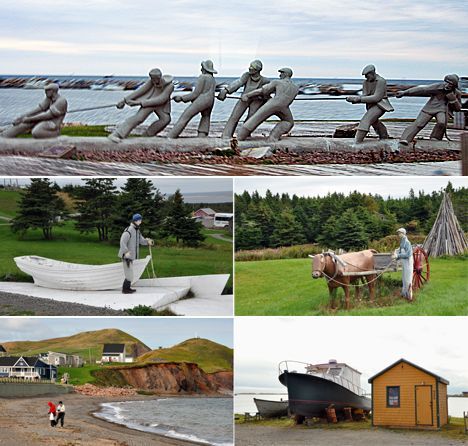
This is our first land stop since Louisbourg, Nova Scotia. We are now in French Canada, the province of Québec. And we’re visiting a confusing collection of 12 islands, seven of which are inhabited. Their total land mass is 80 square miles and their population 14,000 — about the same on both counts as Martha’s Vineyard in Massachusetts. The difference is the Magdalene islanders must be concerned more about global warming because their islands are “formed by long sand dunes created by the constant erosion of the red sandstone cliffs.”
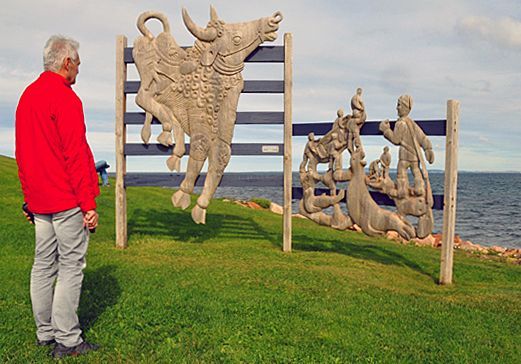
The sandbanks carry paved roads that connect the islands. After a while it seems you’ve been everywhere, seen everything such as statues that show the islanders know their hard life requires cooperation and the model village, “the site of yesteryear” built by Claude Bourgeois, a lobster fisherman, when an accident at sea nearly took his life. There are real villages too, attractive ones that fit into the scenery and still manage to confront all four seasons.
not
“Eighty percent of our 50,000 visitors a year come by ship,” says our guide, Susan Rutledge. “We have 180 miles of beaches, lots of space; everyone has a beach but the temperature is only 68 degrees Fahrenheit in summer. This is the tropics!”
This is a place that breeds hardy souls.
“We never get romantic snow,” says a local. “It comes with the wind and it’s the north wind that kills us.”
But when the waters freeze the ice protects the coast line because, otherwise, erosion would be higher. In winter, cars sometimes move on the 60 miles of Highway 199 in convoys. Strangely, these days when rural communities can’t hold on to their young, the islands are being revitalized by the return of their young people who come back, they say, for the quality of life they remember.
are
“We have everything here,” says a local person in a store that sells beautiful ornaments made of sand. “Everything including a golf course with 9 holes. You want an 18-hole golf course? Play ours twice. And there’s almost no crime. Not enough people. And we on an island! One kid held up an ice cream parlor this summer, guess he forgot that.”
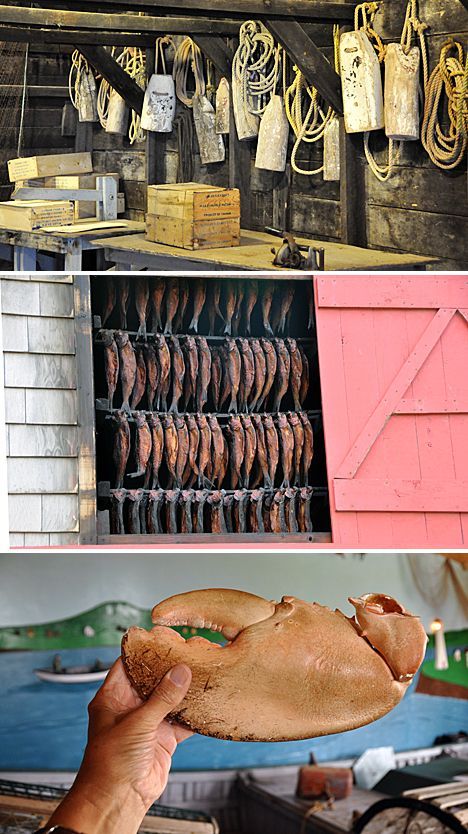
A salt mine employs almost 200 people but fishing is the most important industry. The lobster industry gained prominence as far back as 1875 and now more than 300 lobster fishermen take an annual total of six million pounds of lobster from the bays. The herring industry died with over-fishing around 1975 but began returning 20 years later and smoke houses are being re-activated.
We look over the Fumoir d’Antan, a smokehouse that has smoked herring, mackerel and salmon for three generations. We enjoy a tasting — something we weren’t offered when Claude Bourgeois handed us his prize two-pound lobster claw from a 20-pound lobster.
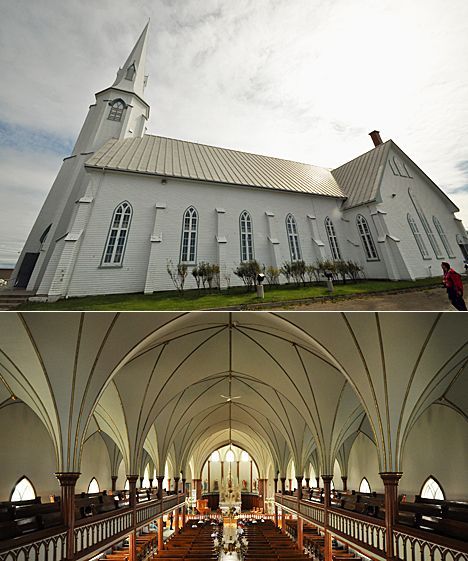
As we head back to the boat, we stop in Lavernière
at the second largest wooden church in North America. St Peter’s was built in 1876 from wood saved from two shipwrecks, wood that had to be blessed before construction could start. It has since been struck four times by lightning. It is blessed. About 450 shipwrecks have been recorded in island history.
“Some of our women held on to the rescued sailors,” a man in the coffee shop says with a grin. “We think they’re the ones working the salt mine!”
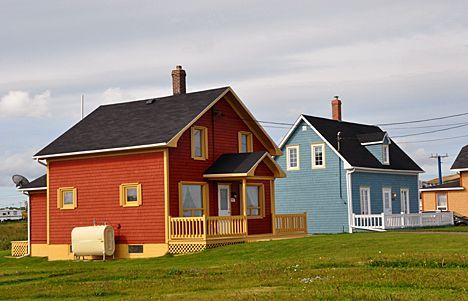
The Magdalen Islands
The Magdalenes have been called the islands of color; the houses often painted with the same paint used on the boat. The Historical Site of La Grave in Havre-Aubert has been accorded a member of the Association of the Most Beautiful Villages of Québec. Much of the simple architecture came, of course, with the first settlers, the Arcadians.
“Our buildings are sturdier than you might think,” says our guide. “They are electrically heated because the original settlers cut down all the trees before they realized the mistake. We are attracting interesting residents these days: a Japanese artist, a Javanese batik silk screener and a Brazilian oceanographer. And doctors! We had only two doctors in 1970 but now we have 20 primary care physicians — and 22 to 23 consultants who come over at intervals. In the summer,” she adds with a twisted smile.
The Man Who Cried Orange: Stories from a Doctor's Life.
The Andersons, who live in San Diego, are the resident travel & cruise columnists for Physician's Money Digest. Nancy is a former nursing educator, Eric a retired MD. The one-time president of the NH Academy of Family Practice, Eric is the only physician in the Society of American Travel Writers. He has also written five books, the last called




